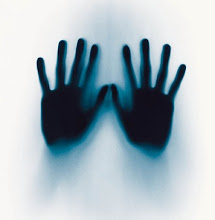
Southeast Asia
Modern human trafficking in mainland Southeast Asia began in the 1960s in connection with the occupation of U.S. soldiers in Indochina, with the male American soldiers being the main clients of the forced prostitution at the time. When the U.S. forces were withdrawn, the business continued with predominantly male tourists as the clients. The ongoing economic changes occurring in Southeast Asia make it a prime area for the human trafficking industry to boom and thrive. Furthermore, some women actually choose to become involved in prostitution, but they are unaware of the conditions that they will be forced to endure. Other women are lured into trafficking by coercion and deception. Thailand especially is a destination for many women that are involved in trafficking, both willing and deceived. The main methods used to lure the women into the business are done by well-organized gangs that use common techniques. Furthermore, 80% of those enslaved in Southeast Asia are women, while 50% are children. Southeast Asia is an area that needs a lot of help, although in the more recent years the government has started to turn its attention towards this issue. However, things such as the economic situation in this area have diverted this necessary attention away from it.
Modern human trafficking in mainland Southeast Asia began in the 1960s in connection with the occupation of U.S. soldiers in Indochina, with the male American soldiers being the main clients of the forced prostitution at the time. When the U.S. forces were withdrawn, the business continued with predominantly male tourists as the clients. The ongoing economic changes occurring in Southeast Asia make it a prime area for the human trafficking industry to boom and thrive. Furthermore, some women actually choose to become involved in prostitution, but they are unaware of the conditions that they will be forced to endure. Other women are lured into trafficking by coercion and deception. Thailand especially is a destination for many women that are involved in trafficking, both willing and deceived. The main methods used to lure the women into the business are done by well-organized gangs that use common techniques. Furthermore, 80% of those enslaved in Southeast Asia are women, while 50% are children. Southeast Asia is an area that needs a lot of help, although in the more recent years the government has started to turn its attention towards this issue. However, things such as the economic situation in this area have diverted this necessary attention away from it.
(The image is of a girl from Timor-Leste who gained independence in 2002.)
Below are several links and interesting articles that I found. Also, the first link talks about addressing the situation in Southeast Asia as well as causes of the trafficking in that region.
http://timmatsui.com/blog/2007/03/01/overview-the-causes-of-and-methods-for-addressing-human-trafficking-in-the-mekong-region-of-south-east-asia/
http://findarticles.com/p/articles/mi_m0WDP/is_2001_Jan_15/ai_70385916
http://kyotoreview.cseas.kyoto-u.ac.jp/issue/issue3/article_282.html
http://findarticles.com/p/articles/mi_m0WDP/is_2001_Jan_15/ai_70385916
http://kyotoreview.cseas.kyoto-u.ac.jp/issue/issue3/article_282.html
http://www.irinnews.org/Report.aspx?ReportId=82744
Below is a link for a video that gives some brief information on the issue in this region as well as some images.
Also, an organization that focuses on human trafficking in Southeast Asia is the Blue Dragon Children's Foundation, which helps the children of Vietnam to escape the poorest economic situations. This organization can be found at the following website:


No comments:
Post a Comment